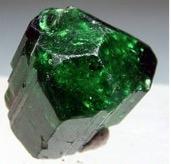The periodic table of the elements is logical. Sometimes. For example, as you go from the top (light elements) to the bottom of the table (heavy elements) the atoms get larger and (usually) rarer. Also, on the left-hand side of the table is where the metals (orange and yellow) reside. Non-metals (green) are on the right-hand side. So, at this point, the periodic table below should at least make some sense.
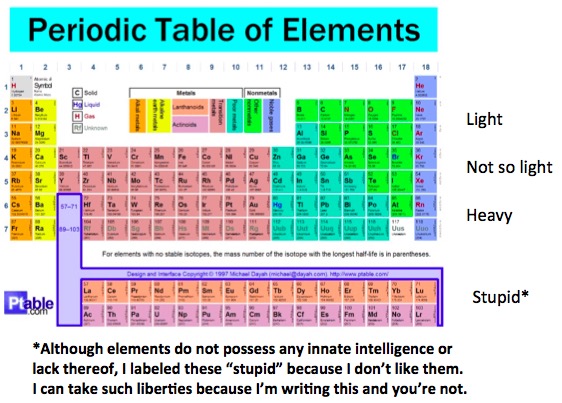
Now, let's zoom in on the lightest elements. You will know most of them. Eight are essential for life, especially, carbon, nitrogen, oxygen, phosphorous and sulfur.
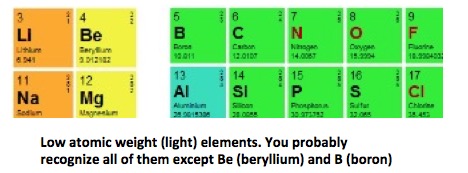
Things get a bit strange when you look at the next row of the table. More colors = more confusion.
Let's zoom in some more on the pink ones. They are called transition metals (1). You are probably familiar with the six on the right: copper, nickel, cobalt, iron, manganese, and chromium, as well as titanium (second from the left). But there are a couple of strange dudes in there.

The lightest transition metals. You know most of them, but what the hell are Sc and V?
After 25+ years in the lab, I not only did not use scandium once but never even thought about it, let alone mention the word. So it's a damn good thing I never found myself in this situation:
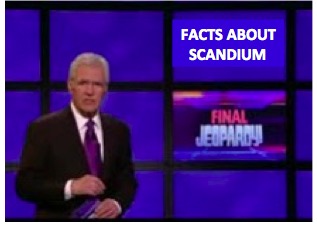
On the other hand, even though vanadium is probably not the first word you'll utter in the morning, it does have some use to chemists. One example is a fairly common chemical reagent (2) called vanadyl acetylacetonate aka vanadyl acac (pronounced ack-ack) which contains (duh) vanadium.
But there are some pretty cool things about vanadium, which was derived from the name Northern-Germanic tribes' goddess Vanadis, meaning "beauty." This will become evident shortly. But first, speaking of beauty...

Game of Thrones' Daenerys Targaryen (Emilia Clarke). Vanadis Targaryen would have been more accurate.
The metal itself is nothing special:
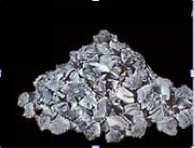
Vanadium metal. Photo: Alibaba
But the same cannot be said about vanadium-containing minerals. They are Daenerys-beautiful. 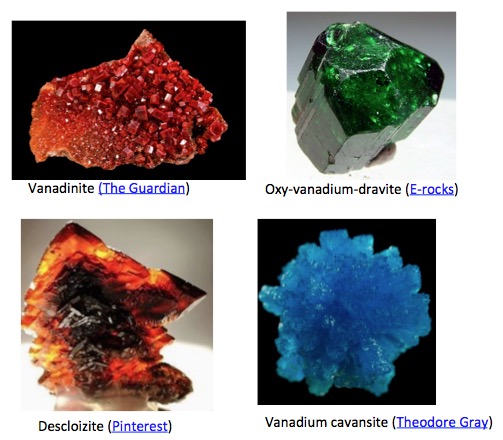
Some vanadium-containing minerals. Photo credits contained in hyperlink. Wow.
Some arbitrary facts about vanadium:
- It is one of only 12 elements with a single letter symbol.
- It is not found as the pure element in nature. (Too chemically reactive)
- Its atomic number is 23, which makes it the 9th lightest of all metals.
- Vanadium was "discovered" twice. (3)
- Depending on its oxidation state it can be a variety of colors.
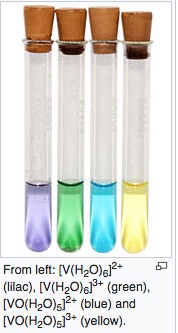
The color of different vanadium complexes depends on its oxidation state: (left to right) II, III, IV, V Photo: Wikipedia
- Vanadium (0.019%) is the 20th most abundant element in the earth's crust.
- But its value does not reflect this:
- Sigma Aldrich sells 10 grams of vanadium metal for $120, or $342 per ounce.
- Gold (0.00000003%) is worth $1320 per ounce.
- Silver (0.00000079%) is worth $17 per ounce.
- Copper (0.0068%) sells for $0.52 per ounce.
- So, based on abundance alone, the value of these metals should be Au>Ag>Cu>V.
- But commercially, vanadium is much more valuable than silver and a bit less so than gold.
Try telling this to your wife on your next anniversary. Then solve the following equation:
- Contrary to urban legend, Vanna White was not named after vanadium. In fact, rumor has it that she has a rather strong aversion toward the element:
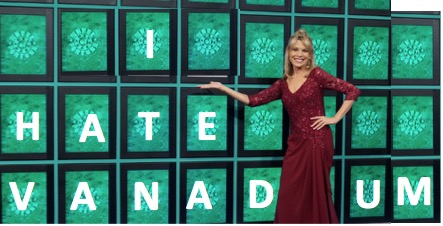
Advice: Don't buy the "I." Vanna will be displeased.
- Vanadium is rather versatile. Its uses include jet engines, steel alloys, superconducting magnets, ceramics, commercial production of sulfuric acid, and (believe it or not) it was used in the Model-T Ford. And they bragged about it.
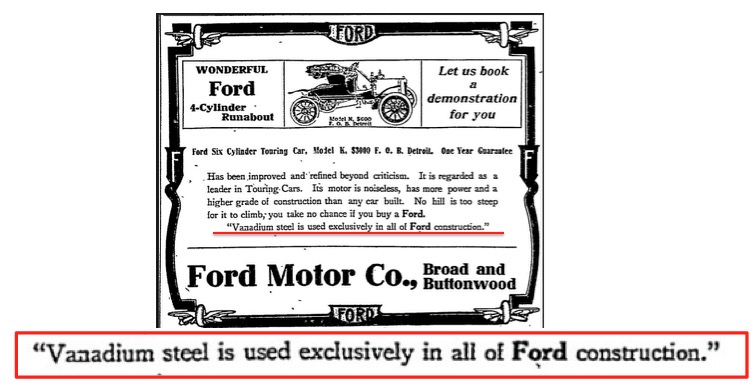
Original image: mtfca.com
That's about it. I've run out of "interesting" facts about the metal. And patience. I'll finish with a letter to (both of) my readers:
Dear Vanadium Aficionados,
Feel free to add anything I missed if you wish. This will serve only to demonstrate that you have less of a life than I do.
Regards,
Josh
NOTES:
(1) The term "transition metal" is a bit vague and probably unnecessary. They are metals but have certain properties that "real metals" don't, especially the ability to form stable complexes with neutral (non-charged) molecules, such as water, ammonia, carbon monoxide, others. There is some controversy about whether the term is useful.
(2) A chemical reagent is a chemical that is used to transform a chemical compound into a different chemical compound. For example, hydrogen is the reagent that converts polyunsaturated fats into trans fats.
(3) Vanadium was first discovered in 1801, but most chemists at that time thought that it was impure chromium. It was "discovered" a second time in 1830. See: https://www.chemicool.com/elements/vanadium.html
